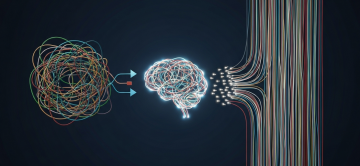The Autonomous MLOps Engineer: Automating the ML Lifecycle

The Autonomous MLOps Engineer: Using Agents to Automate Model Retraining, Deployment, and Monitoring
The MLOps lifecycle is a marvel of modern engineering, yet for most organizations, it remains a surprisingly human-driven process. An alert fires for model drift, a human analyzes the dashboard, decides to retrain, manually triggers a CI/CD pipeline, reviews the validation results, and finally promotes the new model to production. This is a sequence of manual hand-offs, ripe for error and slow to respond.
The critical "why": As organizations scale from a handful of models to hundreds or thousands, this manual approach becomes an untenable bottleneck. The true promise of MLOps is not just automation of tasks, but automation of the *decision-making* that connects them. What if you could deploy an autonomous agent that acts as a diligent, 24/7 MLOps engineer? One that can observe model performance, reason about the cause of degradation, and orchestrate the entire retraining and deployment process on its own. At ActiveWizards, we are building this future. This article outlines the architecture for an autonomous agent that can manage the complete MLOps lifecycle.
The Shift from Manual to Agentic MLOps
This is a fundamental shift in how we think about operations. We are moving from a system where humans execute a playbook to a system where an AI agent executes the playbook, only involving a human for final approval on critical steps.
| Process Step | Manual MLOps | Agentic MLOps |
|---|---|---|
| Drift Detection | Human reviews a Grafana dashboard after an alert. | Agent ingests monitoring data stream, automatically detects drift. |
| Decision to Retrain | Engineer decides "Yes, the drift is significant enough." | Agent's internal logic/LLM decides based on pre-defined rules. |
| Retraining | Engineer manually clicks "Run Pipeline" in Jenkins/GitLab. | Agent calls the `trigger_retraining_pipeline` tool. |
| Deployment | Engineer reviews validation report and promotes the model. | Agent reviews validation report, then requests human approval for promotion. |
An Architecture for Autonomous MLOps
A robust agentic MLOps system is a closed-loop, cyclical process. An MLOps "Manager" agent sits at the center, orchestrating a series of specialist tools or sub-agents to observe, decide, and act on the state of production models.
Diagram 1: The cyclical architecture of an autonomous MLOps agent.
The Team: Defining the Agent's Role and Tools
Using a framework like CrewAI or LangGraph, we can define our MLOps Manager and give it the tools it needs to do its job. The agent itself doesn't contain the MLOps logic; it just knows how to call the right tool at the right time.
from crewai import Agent, Task, Crew, Process
from langchain.tools import tool
# --- Define the Tools ---
@tool
def check_model_performance(model_id: str) -> dict:
"""Checks the latest performance metrics (drift, accuracy) for a given model."""
# ... Logic to query Prometheus or a monitoring database
return {"status": "ok", "drift_score": 0.05}
@tool
def trigger_retraining_pipeline(model_id: str) -> str:
"""Kicks off a versioned retraining job for the specified model."""
# ... Logic to call a Jenkins, Airflow, or Kubeflow pipeline API
return "retraining_job_123_started"
@tool
def get_validation_results(job_id: str) -> dict:
"""Gets the validation metrics for a completed retraining job."""
# ... Logic to check the model registry or artifact store
return {"status": "complete", "new_accuracy": 0.95, "old_accuracy": 0.92}
# --- Define the Agent ---
mlops_agent = Agent(
role='Autonomous MLOps Engineer',
goal='Ensure all production models are performing optimally. If a model degrades, orchestrate the full retraining, validation, and deployment process.',
backstory='A vigilant and reliable AI engineer responsible for the entire ML lifecycle.',
tools=[check_model_performance, trigger_retraining_pipeline, get_validation_results],
allow_delegation=False,
verbose=True
)
# --- Define the Task ---
# This task would be triggered by a scheduler (e.g., every hour)
continuous_monitoring_task = Task(
description='Check the performance of model "fraud-detector-v1". If data drift exceeds 0.1, trigger and manage the full retraining process.',
expected_output='A summary of actions taken, or a report that no action was needed.',
agent=mlops_agent
)
# ... The rest of the CrewAI setup
A fully autonomous agent with the power to deploy code to production is a high-risk proposition. The most robust agentic MLOps systems don't remove the human; they empower them. The agent should do all the legwork—detecting the problem, retraining the model, running validation tests, and generating a comparative report. But the final step—promoting the new model to serve 100% of production traffic—should be a tool that requires human approval. This could be as simple as the agent creating a Jira ticket or sending a Slack message with "Approve/Deny" buttons. This creates a powerful partnership: the agent provides speed and analysis, and the human provides judgment and governance.
Production-Ready Agentic MLOps Checklist
Before letting an agent manage your models, ensure your system is production-grade.
- Secure Tooling: Do the agent's tools operate with the principle of least privilege? The retraining tool should not have access to production deployment credentials.
- Idempotency & State: If the agent is re-triggered while a retraining job is already running, does it know not to start another one? The system needs a state store (e.g., a simple database) to track in-progress jobs.
- Cost Controls: Does the agent have safeguards to prevent it from triggering costly retraining jobs in a rapid, infinite loop due to a misconfigured alert?
- Observability: Can you trace the agent's entire decision-making process? If it decides *not* to retrain a model, can you find out why? (This is where LangSmith is invaluable).
- Human Approval Gates: Is there a clear, required human approval step before any change is made to a production environment?
The ActiveWizards Advantage: Engineering Autonomous MLOps
The convergence of agentic AI and MLOps is the next evolution of automated software delivery. Building these systems requires a rare combination of skills: a deep, fundamental understanding of the ML lifecycle, data platforms, and CI/CD, paired with cutting-edge expertise in designing and orchestrating autonomous agents.
This is the core of ActiveWizards' value proposition. We don't just build models or agents in isolation; we engineer the end-to-end autonomous systems that manage them, turning your MLOps process from a manual workflow into a strategic, intelligent asset.
Put Your MLOps on Autopilot
Ready to automate the decision-making at the heart of your MLOps lifecycle? Our experts can help you design and build a custom, autonomous agent to monitor, retrain, and manage your machine learning models at scale.



Comments (0)
Add a new comment: